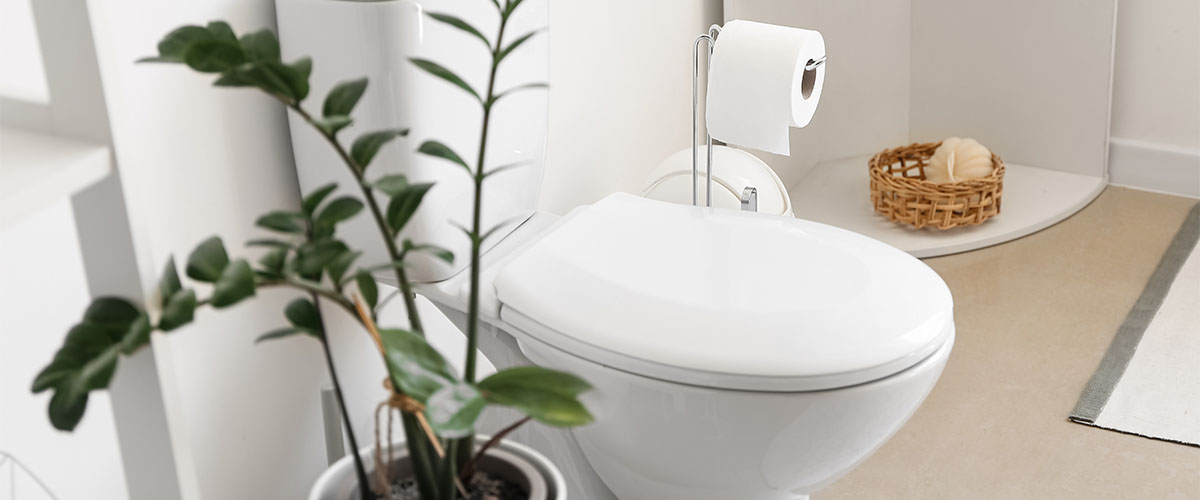That steady run from your toilet means wasted water, higher bills, and a tank that won’t behave. I’ve spent 20+ years fixing Winston Salem homes, and a running toilet is one of those problems that can be simple or sneaky. Start easy. Listen closely. You’ll hear that hollow thunk when the valve finally gives, or a faint trickle down the bowl. And remember: most fixes are in the tank, not the bowl. We’ll go step-by-step—from five-minute checks to the few times you should call a pro. Grab a towel, a good light, and let’s put an end to that running toilet.
5-Minute Checks For a Running Toilet: Flapper, Chain, Float, and Shutoff Valve
First things first, pop the lid. Look at the flapper. If it’s warped, stiff, or leaves black residue on your finger, replace it. Check the chain: it should have a little slack. Too tight and the flapper can’t seal; too loose and it won’t lift. Next, the float. Set the water line about an inch below the top of the overflow tube—manufacturers typically mark it. If water spills into the overflow, lower the float.
Make sure the shutoff valve at the wall is fully open. A partially closed valve can cause the fill valve to chatter.
Debris in the fill valve is classic. Turn off the water, hold a cup over the valve, twist off the cap per the manufacturer’s instructions, and flush the supply to spit out grit. Reassemble gently—don’t overtighten the plastic. Ensure you always use eye protection. According to industry guidelines, simple component checks like these are the first line of diagnosis. Five minutes per item and you could avoid a costly visit.
A quick story break: Last week, a “bad” toilet became perfect when we un-kinked the chain. Thirty seconds. Silence.
Intermediate – PRV, Supply Filters, Dye Test, Overflow Height, and Pressure Testing
If the toilet keeps running, verify. Do a dye test: put food coloring in the tank, wait 10 minutes with no flushing. If color appears in the bowl, it points to a leaking flapper or flush valve seat. If no color appears but the tank keeps refilling, the issue may be overflow height or a weeping fill valve. Re-check that water line—about an inch below the overflow rim, as manufacturers and plumbing guides recommend.
Check the supply side. Shut off the water, disconnect the supply line at the fill valve, and flush the line into a bucket to clear sediment. Some braided lines and angle stops trap grit. Reconnect and test.
Now pressure. Clip a gauge to a hose spigot and read static pressure. According to industry guidelines (EPA/codes), normal residential pressure is typically 40–60 PSI; 80+ risks damage and constant valve seepage. If you’re seeing 80 or more, your pressure reducing valve (PRV) may be failing, especially if you hear pipes hum or bang. In my experience, Winston Salem neighborhoods can see evening pressure spikes. Expect 20 to 30 minutes for testing and adjustments. Replacement may be necessary and should be handled by a licensed plumber. Final costs depend on system access and parts.
Advanced – System Diagnostics and Leak Detection
When the basics check out, think systems. Inspect the flush valve seat—the plastic ring that the flapper seals against. Run your finger around it. Nicks or mineral ridges? Polish gently with a green Scotch-Brite pad, or replace the entire flush valve/overflow assembly. That’s a bigger job — you’ll need to remove the tank, get a new gasket, and carefully re-tighten. Plan for 45–90 minutes.
Look at the refill tube. It should clip above the overflow, not shoved down inside. If it’s submerged, it can siphon and cause phantom fills. Also, turn off the toilet’s shutoff overnight. If the bowl drops without refilling, suspect the flapper/seat. If the level stays, but running returns only when water is on, the fill valve is weeping—swap it.
If you have a PRV and a check valve at the meter, thermal expansion from your water heater can spike pressure after heating cycles. A small expansion tank, set to your home’s PSI, usually resolves it. According to industry guidelines, these are recommended on closed systems to protect fixtures. And I prefer ball valves over gate valves at the shutoff—quarter-turn, reliable sealing. You’ll feel a crisp stop. No guessing.
When to Call a Professional in Winston Salem, NC
There’s a point where DIY stops. Call a pro if any of these hit: tank cracks or sweating that drips onto the floor, pressure consistently over 80 PSI even after adjustments, repeated failure of new flappers/fill valves, corroded or stuck shutoff valves, or if the tank-to-bowl bolts are rusted and weeping. Also, call if you have two or more toilets refilling on their own—could be a house-wide pressure or PRV issue, not just one fixture.
We’ll pressure-test, inspect valve seats, verify overflow heights, and check for cross-siphon issues. Service visit costs can vary depending on the issue. A licensed plumber can assess the problem and provide a clear estimate. Expect 30–60 minutes for a full assessment. We’ll bring manufacturer-approved products and follow safe practices: shut down water, relieve pressure, protect flooring, and torque plastic fittings lightly to prevent cracks. You’ll hear that hollow thunk when the failing valve finally gives—and then, silence. Problem solved.
Frequently Asked Questions
Will a running toilet raise my bill?
Yes. A small leak can waste hundreds of gallons a day.
Are blue tank tablets okay in the toilet?
They often degrade flappers. I avoid them; use mild cleaners and replace flappers as needed.
Do I need Teflon tape on toilet supply connections?
Always use a Teflon tap. If the supply lines have rubber cones or washers, no tape is needed on those. Tape is for threaded metal-to-metal joints.
Hot vs. cold check?
I usually check hot vs cold on faucets to isolate issues; toilets are cold-only, so supply/pressure is the culprit.
How long should fixes take?
Quick checks typically take 5 to 10 minutes. Replacing a valve may take 30 to 45 minutes, while a full rebuild can take up to 90 minutes. For complex plumbing problems or toilet repair needs, professional sink service may be required.
What PSI should I have?
According to industry guidelines, aim for 40–60 PSI; 80+ can damage fixtures and cause a running toilet.
Next Steps for Fixing a Running Toilet
- Check the flapper for wear or mineral buildup
- Test chain slack, float height, and water level in the tank
- Do a dye test to check for leaks from tank to bowl
- Inspect the fill valve and supply line for debris
- Check household water pressure with a gauge
- Confirm the PRV is working and properly adjusted
- Contact PF Plumbing if pressure remains high or issues persist

